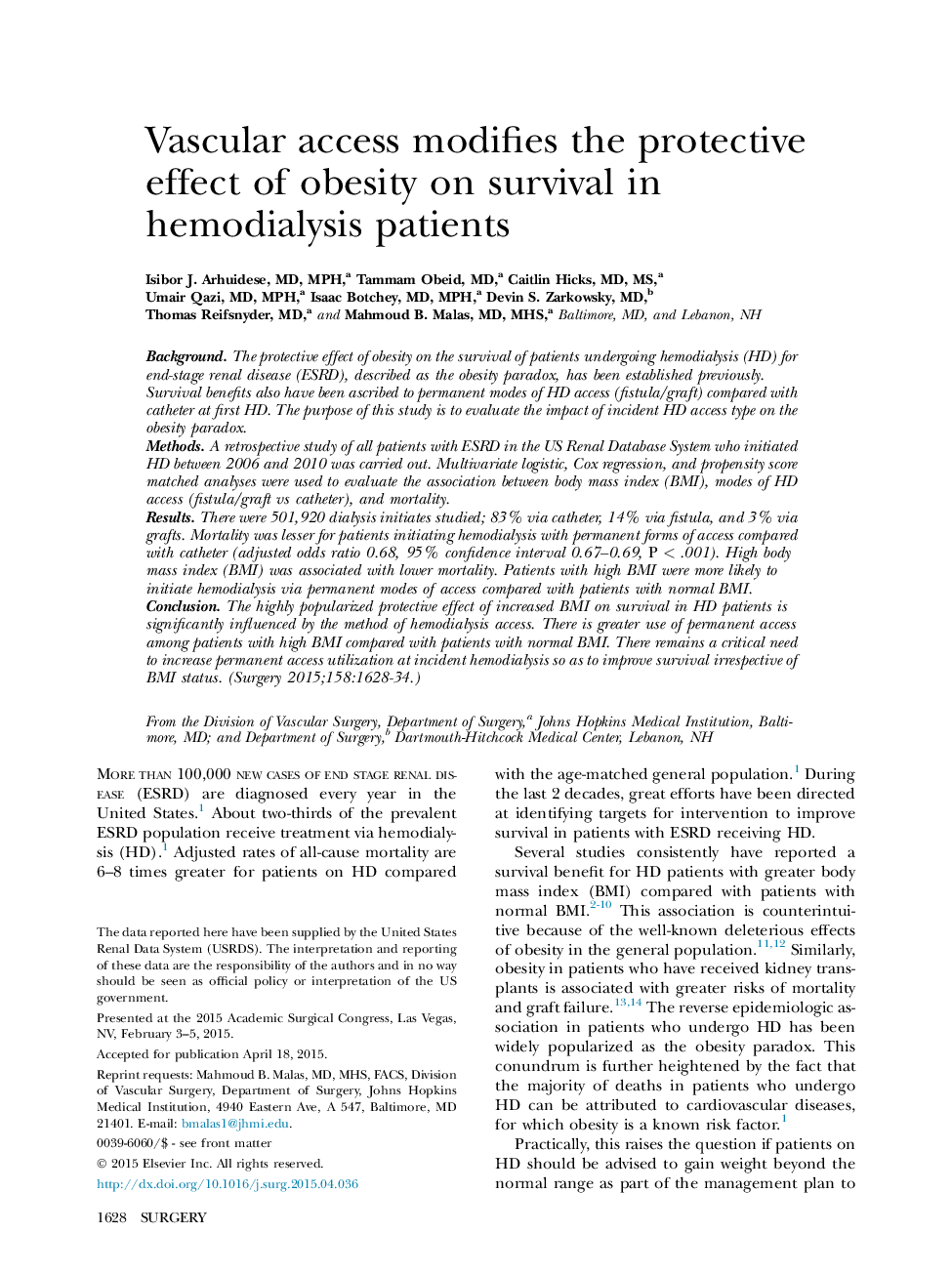| Article ID | Journal | Published Year | Pages | File Type |
|---|---|---|---|---|
| 4306418 | Surgery | 2015 | 7 Pages |
BackgroundThe protective effect of obesity on the survival of patients undergoing hemodialysis (HD) for end-stage renal disease (ESRD), described as the obesity paradox, has been established previously. Survival benefits also have been ascribed to permanent modes of HD access (fistula/graft) compared with catheter at first HD. The purpose of this study is to evaluate the impact of incident HD access type on the obesity paradox.MethodsA retrospective study of all patients with ESRD in the US Renal Database System who initiated HD between 2006 and 2010 was carried out. Multivariate logistic, Cox regression, and propensity score matched analyses were used to evaluate the association between body mass index (BMI), modes of HD access (fistula/graft vs catheter), and mortality.ResultsThere were 501,920 dialysis initiates studied; 83% via catheter, 14% via fistula, and 3% via grafts. Mortality was lesser for patients initiating hemodialysis with permanent forms of access compared with catheter (adjusted odds ratio 0.68, 95% confidence interval 0.67–0.69, P < .001). High body mass index (BMI) was associated with lower mortality. Patients with high BMI were more likely to initiate hemodialysis via permanent modes of access compared with patients with normal BMI.ConclusionThe highly popularized protective effect of increased BMI on survival in HD patients is significantly influenced by the method of hemodialysis access. There is greater use of permanent access among patients with high BMI compared with patients with normal BMI. There remains a critical need to increase permanent access utilization at incident hemodialysis so as to improve survival irrespective of BMI status.
